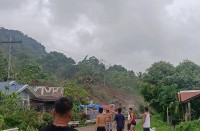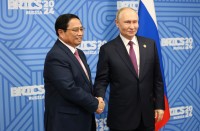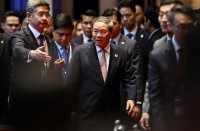MANILA – Finance Secretary Carlos Dominguez III said the Duterte administration will look “closely” at the Regional Comprehensive Economic Partnership (RCEP), given its new policy of moving the country swiftly towards economic integration with its fellow-members in the Association of Southeast Asian Nations (ASEAN) and major trade partners in Asia and the Pacific.
“I personally would like to look at RCEP closely because that’s the 10 ASEAN countries, I think. That one, we are more open to,” Dominguez said in a recent interview.
The RCEP is the proposed 16-nation free trade area comprising the 10 ASEAN member-nations—the Philippines, Malaysia, Singapore, Brunei, Thailand, Indonesia, Laos, Cambodia, Myanmar and Vietnam—and its six trading partners China, South Korea, Australia, India, Japan and New Zealand.
Before this year’s Asia Pacific Economic Forum (APEC) summit in Lima, Peru, trade ministers from the 16 countries comprising the RCEP met on Nov. 3-4, in Cebu City and discussed a wide range of issues, including the proposal to remove or drastically reduce duties on a number of goods traded across the region.
Dominguez said the head of the delegation of the European Union to the Philippines has also mentioned a possible free trade agreement between the EU and the Philippines “and we will look at that and give that our priority attention.”
He said that because the Duterte administration is a new one, it wants to thoroughly study these proposed free trade arrangements.
“So we have to think about [these] very carefully, we are a new administration, we want to see the pros and cons, we want to see how we will benefit,” Dominguez said.
The RCEP was conceptualized about a decade ago but was launched only in November 2012. Its membership of 15 Asian countries account for almost half of the world’s population, almost 30 percent of the global Gross Domestic Product (GDP) and over a quarter of the world’s exports.
In terms of merchandise exports, RCEP is larger than the Trans-Pacific Partnership (TPP), as China’s exports of $2.3 trillion alone as of 2014 are larger than the combined exports of the US ($1.6 trillion) and Canada ($474 billion), the two lead members of the TPP.
The RCEP covers trade in goods and services, investment, economic and technical cooperation, intellectual property rights, competition policy, and dispute settlement, among other issues. It does not cover labor, environment and state-owned enterprises.
During the President’s state visit to China, Dominguez and Socioeconomic Planning Secretary Ernesto Pernia said that while the Duterte administration will maintain its good relations with Western economies, it will now push for “stronger integration” with its neighbors in the region. They said the Philippines’s economic integration with the ASEAN, along with China, South Korea and Japan, will open opportunities for trade and investment to a market of 1.8 billion people across the region.
“We will maintain relations with the West but we desire stronger integration with our neighbors. We share the culture and a better understanding with our region,” Dominguez and Pernia said.
Dominguez and Pernia said the regional integration envisioned by the Duterte administration “is similar to what has been done in the EU, NAFTA (North American Free Trade Agreement) in North America and Mercosur (Mercado Común del Sur) in South America.”
Dominguez told senators earlier that the President is not changing Philippine foreign policy but merely “recalibrating” it, following Mr. Duterte’s pronouncements that the Philippines would build new alliances with China and Russia.
He explained at a recent Senate hearing that the President’s recalibration of Philippine foreign policy would open the country to markets other than the traditional ones in the West.
“The President has indicated to us that he’d like to strengthen and exploit opportunities…in countries other than our traditional trading partners,” Dominguez said.
The Duterte administration plans to ramp up spending on infrastructure over 5 percent of the GDP next year, and maintain or even increase this in the succeeding years to sustain the country’s high growth and create jobs outside Mega Manila, in line with its 10-point socioeconomic agenda on inclusive growth. (DOF)








